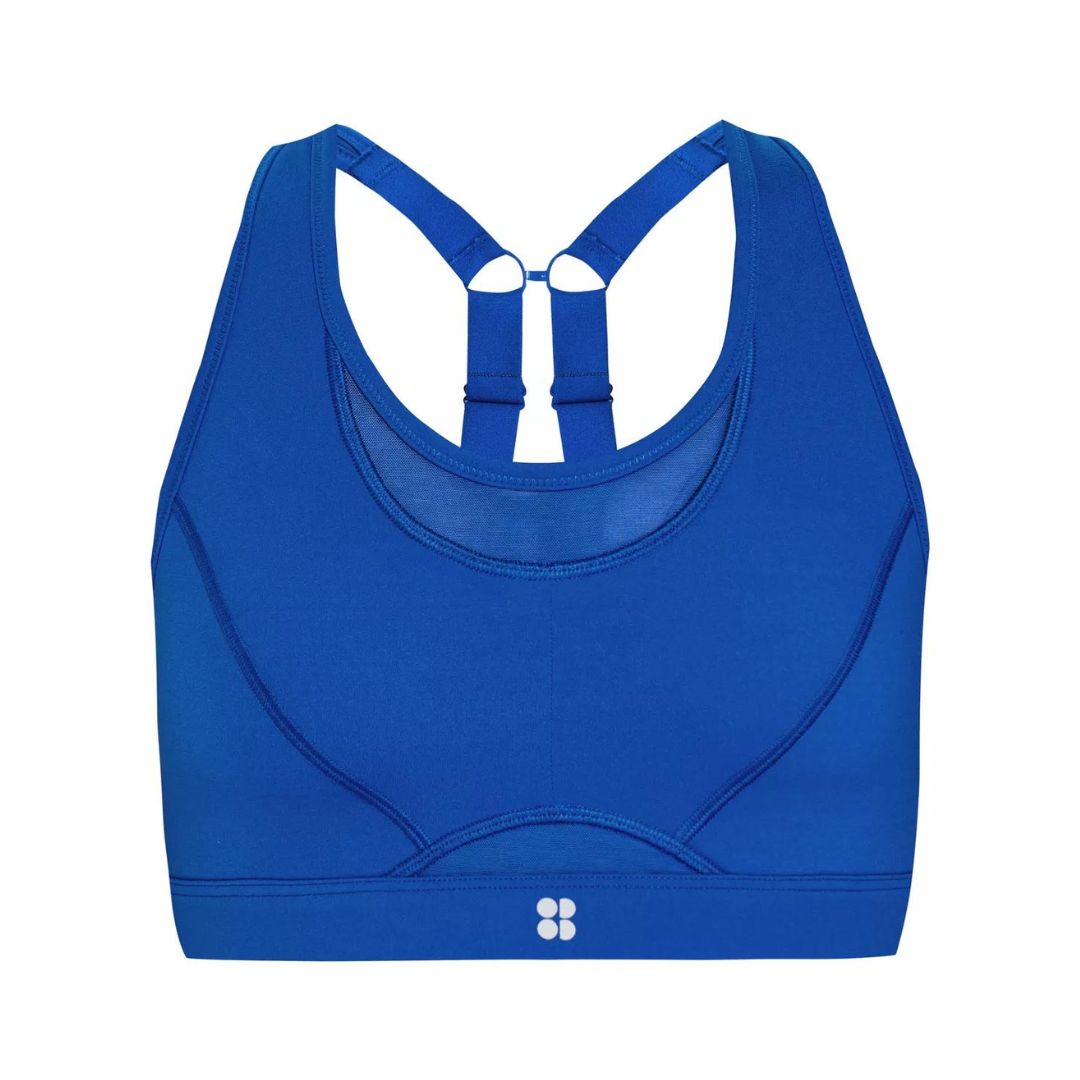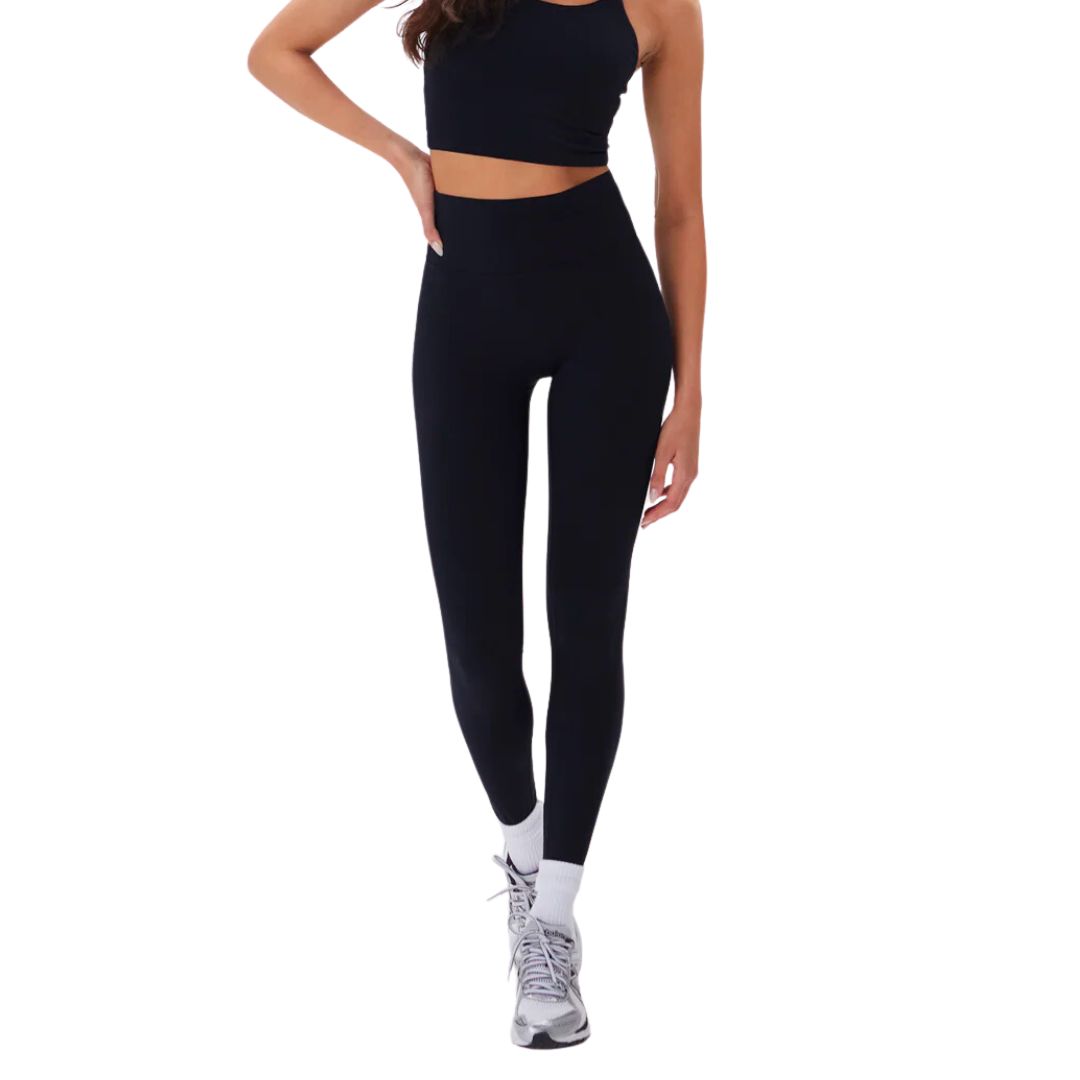Keen to know how to run for longer? 12 simple ways to make upping your mileage seem easy, according to the pros
Whether it's 5km, 10km, or a half marathon, our experts have got you covered.

It's London Marathon week, which means, come Sunday, many of you will be Googling how to run for longer. There's nothing quite like seeing 50,000 plus runners lacing up and hitting the streets of London, you see, and for many it's as motivating as it is emotional - so much so, it inspires many who've never run before to consider giving it a go.
Whether you're looking to complete a 5km, 10km, half marathon or marathon distance, there are some common tips which will help all runners, whatever your ability.
Do note here: running isn't always about how far or fast you can go - far from it. Often, running is about headspace and mental freedom after a busy day at work. FIIT trainer Gede Foster shares that there are a myriad of motivations for upping your running distance. "You might have signed up for a race, be keen to build your cardio fitness, or enjoy the mental challenge of running longer distances," she shares.
Not to mention the fact that running is both affordable and accessible. "It’s a great form of exercise, no matter your gender, ethnicity, or age," shares Foster. "Almost anyone can do it, which is why it can be a popular choice for people wanting to improve their fitness."
Wondering what the benefits of running are? There are loads - according to the NHS website, it's a great cardio booster, is good for your heart, and lowers your resting heart rate, too.
Not bothered about distance but keen to get speedier? Our expert-led guide on how to run faster is for you. Don't miss our guides to strength training for running, running in the heat and running tips for beginners, while you're here.
How to run for longer: 12 simple tips
1. First things first: assess your ability
PSA: You need to know how far you can run comfortably. A good way to test this is to lace up and record on your phone (you can download apps like Strava for free, which will track your mileage for you).
Celebrity news, beauty, fashion advice, and fascinating features, delivered straight to your inbox!
Then, once you've clocked how far you can run, try and increase that by ten per cent week on week. That means if you can run three miles right now, you can run around 3.5 miles next week. One way to make sure you don't crash and burn? Pace yourself, advises Foster. "Slow and steady wins here," she shares. "You're building up your time on feet capacity, after all."
Do note, though: as above, it's best to increase your distance gradually week on week, rather than drastically jumping from 5km to, say, 10km. Even easier than the ten per cent rule: add on 1km each week or aim to run for an extra 5 minutes per week, shares the PT.
2. Break it down
Ex-pro cyclist for Team GB Joanna Rowsell advises breaking down each training session into small blocks - that way, it's mentally easier to manage and won't feel so overwhelming.
"Looking at a session as a whole can be daunting. I tell myself I’m just going to do the first block and then I’ll stop. But I’m more motivated once I’ve ticked off one block, so I’ll move on to another," she explains.
3. Don't be afraid to walk
Think that because you want to improve your running distance, you need to run for your whole workout? Actually, wrong. It's all about time on feet, after all, so walking won't do you any harm if you need a breather (read our guide to the benefits of walking, here).
"Try running a kilometre, then walking a kilometre," advises Foster. "Build yourself up to run 2km, then walk one, and so on. Take a steady pace and aim to be consistent - you should be slowing it right down for the longer efforts."
4. Support your training with strength workouts
FYI, running longer distances requires strength and endurance in your legs, both to carry your body and further to prevent injury.
Foster recommends supporting your runs with some lower-body strength work in the gym or at home. "With every stride, you are putting 2.5 to three times your body weight of force through your joints, so you want to ensure your body is strong and stable enough to handle that load," she shares. Read our guide to strength training for running or try these expert-approved bodyweight leg workout or lower body workout.
5. Invest in a run coach
Serious about your running goal? Foster advises investing in a running coach.
Why? Because while there are great free plans available online, paying a coach to check in on you and have on hand for any questions will keep you motivated, accountable and dedicated.
6. Buy the right kit
This one's important. You won't be able to up your running distance if you're injured after the first few runs, and injury is far more likely if you're not in the right kit.
Not sure where to start? Trainers and a good bra are the most important. Fun fact: most running shops will film your gait and advise you on the type of shoe that will best suit you, shares Foster. "If you're considering longer distances, reviewing your running technique can pay you back tenfold as it will make you not only more efficient but ensure your mechanics are sound for the repetitive strain of running, too."
Also worth thinking about is chafing, which happens to the best of us (and most long-distance runners). "The repetitive movement and skin-to-skin rubbing combined with the salt in sweat acts like sandpaper, grinding and irritating the skin, which can lead to an unpleasant and painful experience," shares Foster. Read our guide to chafing creams here (Vaseline is a great go-to).
Our round-ups of the best running trainers, running shorts and gym leggings, as sweat tested by our Health Editor, will help.
7. Take on enough water and fuel
Upping your distance? It's very important that you're fuelling and hydrating sufficiently. "Studies have found that athletic performance is impaired up to 30% when we're dehydrated," shares Foster.
Do eat a snack an hour or so before you run, if you'll be running for more than an hour, too - key to replacing your glycogen stores.
8. Track your training
Sounds obvious, but this is something many actually forget to do.
"Keep a record of your training runs, and similarly, how you feel on training days, so you can recognise positive patterns,’ says Sarah Claxton, ex-Olympic hurdler and personal trainer at Embody Fitness.
"Also note down how much sleep you had the night before, what you ate, when you trained and what you did if you have time. It will help you keep track of what you need to do to ensure you perform well every time."
9. Learn from your failures
In other words, take failure in your stride. A 2015 study by Rutgers University showed that focusing on what we can learn from failure builds resilience and helps us persevere. So, for instance, we’ll have a better chance of nailing the next job interview if we consciously evaluate why the previous one didn’t quite go to plan.
"The most important thing to remember is that failure is temporary," says ex-Olympic swimmer Rebecca Adlington. "I can recall racing in the World Championships in 2007 and coming tenth. I didn’t even make the final and was so upset. But then a year later, I got two gold medals at the Olympic Games in Beijing. Failure is fleeting. It hurts like hell, but you will always move on."
10. And celebrate your wins, too
If you've achieved a goal, however small or insignificant it may feel, it's important to celebrate it and your success. (Read our guide to goal setting, here).
"I always balance my training sessions with rewards," says British wheelchair racer Hannah Cockroft OBE. "You should always acknowledge if a goal has been reached, otherwise it’s as if it never happened. There’s got to be some joy somewhere.’"
Emotional rewards, like buying yourself a new book or watching an hour of watching Netflix, work well. Stuck for self care ideas? Look no further.
11. Set clear goals
Always put your goals on paper, advises Team GB cyclist Joanna Rowsell.
She shares that she's much more inclined to stick to something if she's written it down, and research carried out by the Dominican University of California found that she's not alone. You're 42 per cent more likely to achieve your goals just by jotting them on paper.
The same study also found that more than 70 per cent of the participants who sent weekly updates to a friend achieved their goals. Time to get texting.
12. Utilise visualisation
And finally, if you find yourself anxious or paralysed by fear about upping your running distance, picture yourself doing what it is that scares you. "Visualisation is vital for me," says Olympic middle-distance runner Hannah England. "A couple of days before a race, I’ll set aside ten to 15 minutes to picture what’s going to happen when I arrive at the stadium – where the loos are, where I’ll collect my number. It would be exhausting if I thought about the race all the time, so I do it in concentrated bursts."
Dr Tracey Devonport, a sport and exercise psychologist to many top Olympic athletes from the University of Wolverhampton, agrees, adding that this can be a useful tool for all of us in tricky situations, such as asking for a pay rise. "The more you visualise yourself in a scary environment – imagining the sights, sounds and emotions – the less daunting it becomes," she says. "I’ve had many golfers in my house, standing in my cat-litter tray, so they can get a realistic feeling of what it would be like if they were in a bunker during a competition. This is called “functional equivalence” – the idea that mental imagery functions in the same way as physical perception."
Shop MC UK's favourite workout kit now:

Ally is Marie Claire UK's Senior Health and Sustainability Editor, a well-regarded wellness expert, nine-time marathoner, and Boston Qualifying runner.
Utilising her impressive skillset and exceptional quality of writing, she pens investigative, review and first-person pieces that consistently demonstrate flair and originality.
As well as writing, Ally manages a team of freelancers, oversees all commissioning and strategy for her pillars, and spearheads the brand's annual Women in Sport covers, interviewing and shooting the likes of Mary Earps, Millie Bright, and Ilona Maher. Shortlisted for three BSMEs and winning one in 2022, Ally lives and breathes her verticals: her eye for a story and connections within the wellness sphere are unrivalled. Follow Ally on Instagram for more.



